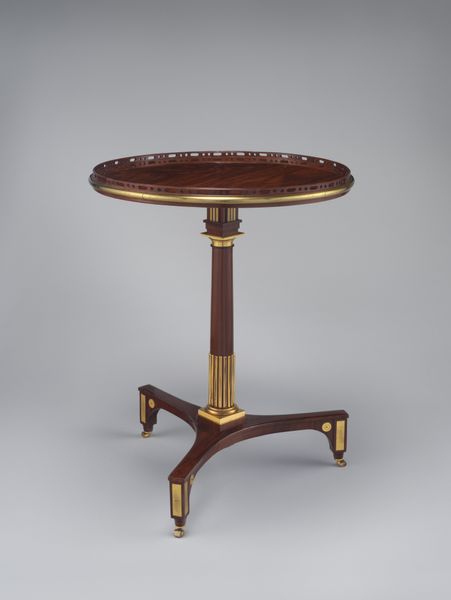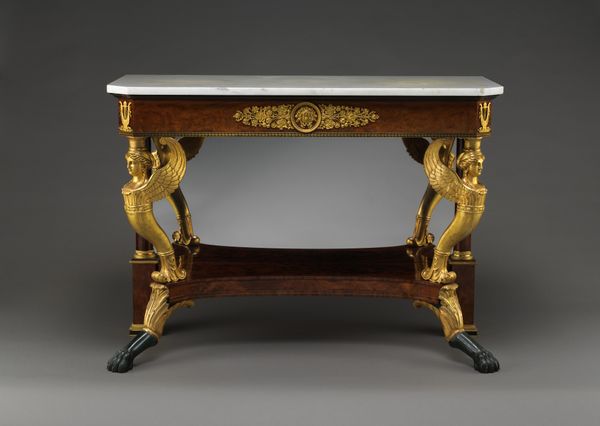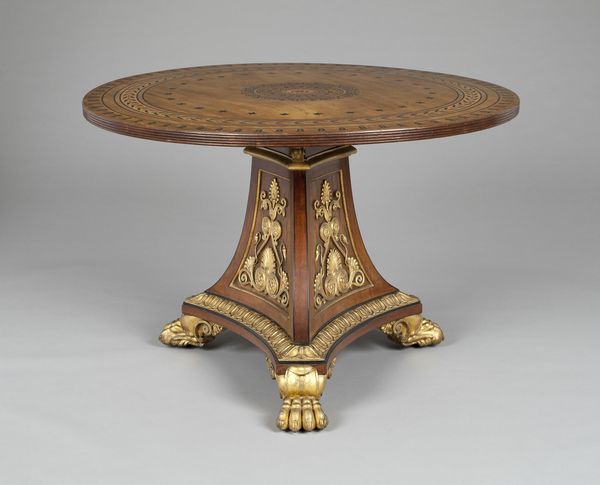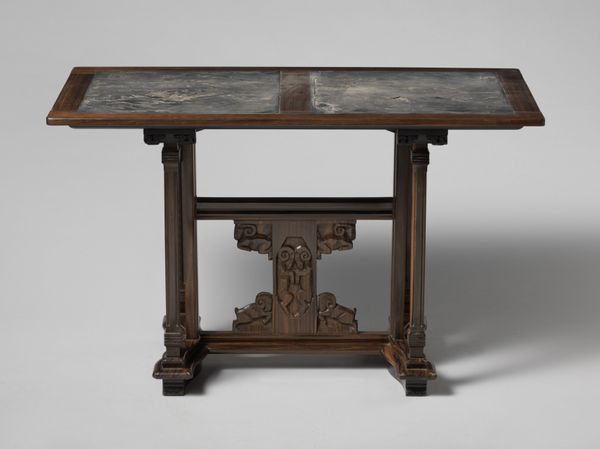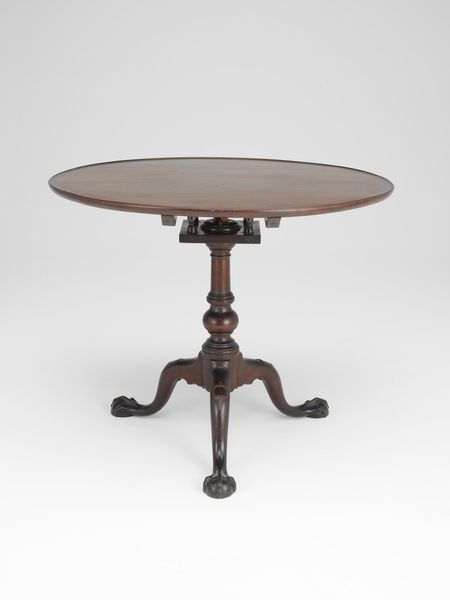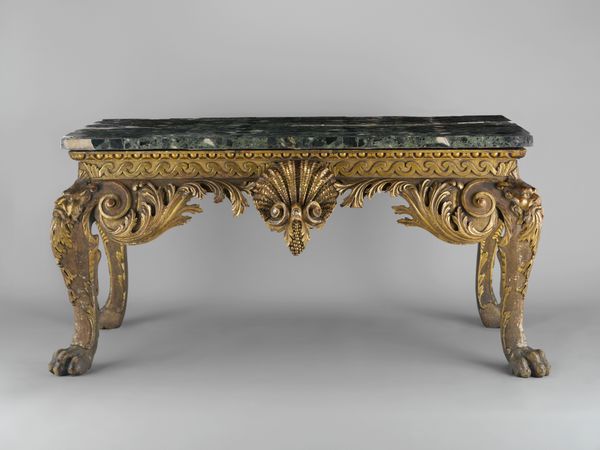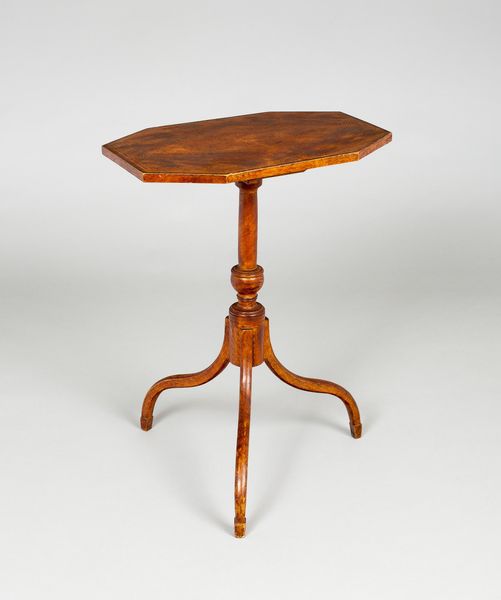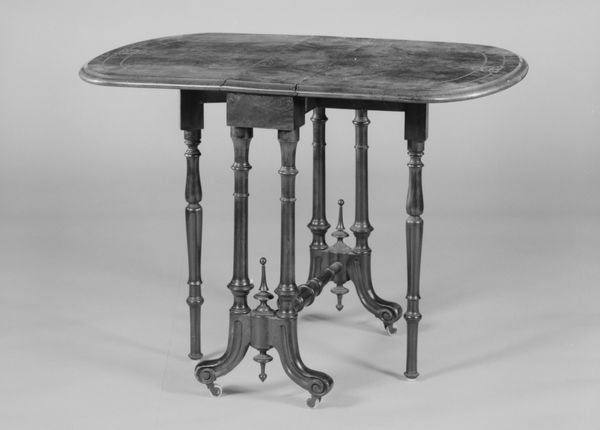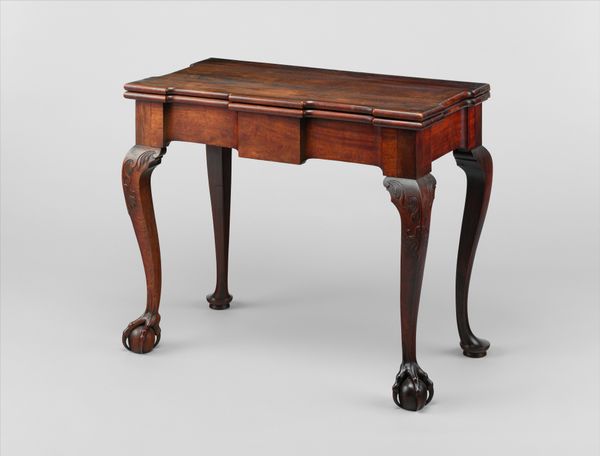
Dimensions: Overall: 27 1/2 × 22 × 15 in. (69.9 × 55.9 × 38.1 cm)
Copyright: Public Domain
Editor: So this ornate Center Table, dating roughly between 1775 and 1790, hails from the Imperial Armory in Tula, Russia, crafted with silver, gold, and other metals. The detailing is just exquisite. It has an intimidating presence and a lavish feel. What aspects of the table stand out to you? Curator: The sheer opulence of this piece screams its intended purpose: displaying power and wealth. Think about the historical context – Russia in the late 18th century, under Catherine the Great. How do you imagine a table like this functions within her court? Editor: I suppose it would be placed prominently in a grand room, meant to impress visiting dignitaries and solidify her image. Perhaps it displayed valuable objects, further signaling her wealth and authority? Curator: Precisely. And the choice of materials – gold and silver – speaks volumes about Russia’s access to resources and their commitment to conspicuous consumption. What strikes you about the design elements? Editor: I notice the Rococo style flourishes in those golden leaf details at the base and in the curvy, almost animalistic legs. They look like dragon's feet. It contrasts a lot with the somewhat muted top of the table. It's an interesting contrast to see, this mixture of opulence and constraint. Curator: That tension is key. While the Rococo style represented a specific aesthetic preference for the elite, its association with luxury could also be politically charged. Were there internal criticisms of such extravagance during this time in Russia? Considering this within the context of widespread serfdom... how might the public receive this table? Editor: That's an excellent point. The extravagance could easily become a point of resentment, especially for those living in poverty. A piece like this is not just a table; it's a symbol of social and economic disparity. I hadn't thought about it from that angle initially. Curator: Seeing beyond the surface ornamentation, understanding the complex social and political undercurrents, gives the table a richer, more critical historical significance. Editor: Definitely! Thanks to you, I understand it’s less about décor and more about a declaration of power during an era of social stratification.
Comments
No comments
Be the first to comment and join the conversation on the ultimate creative platform.
